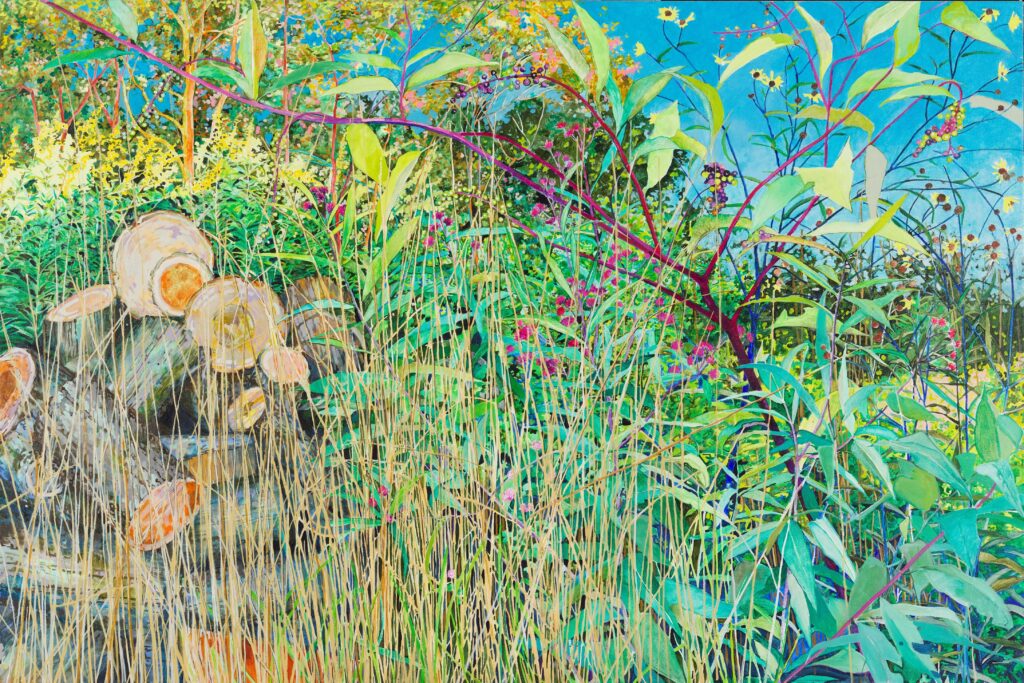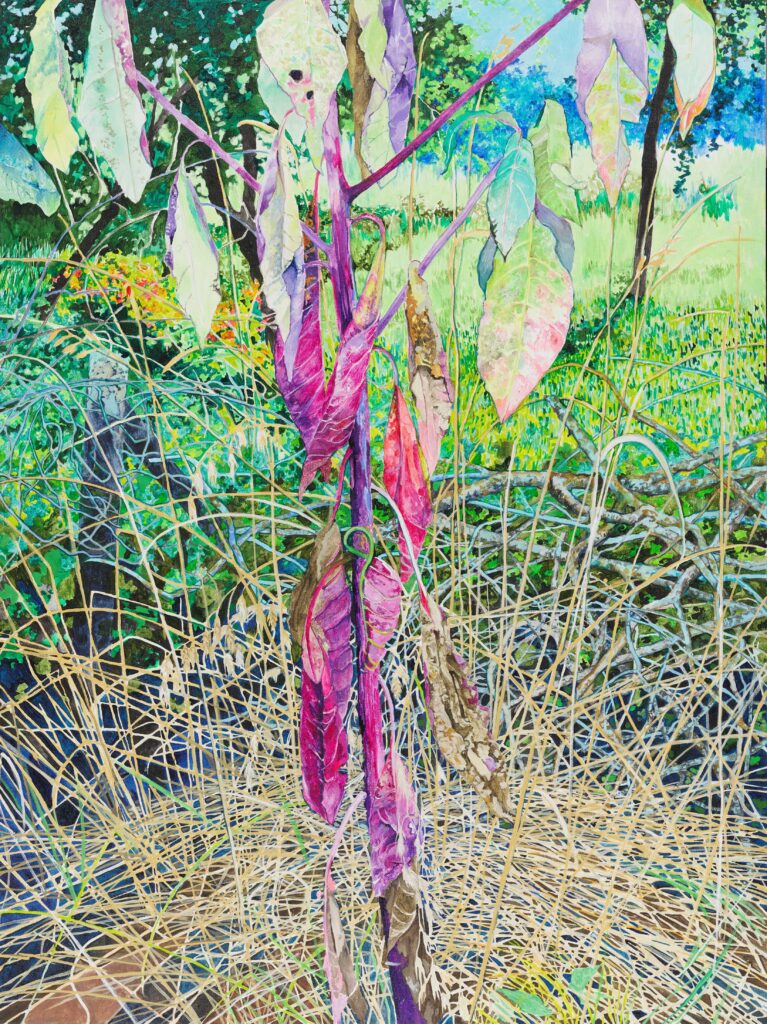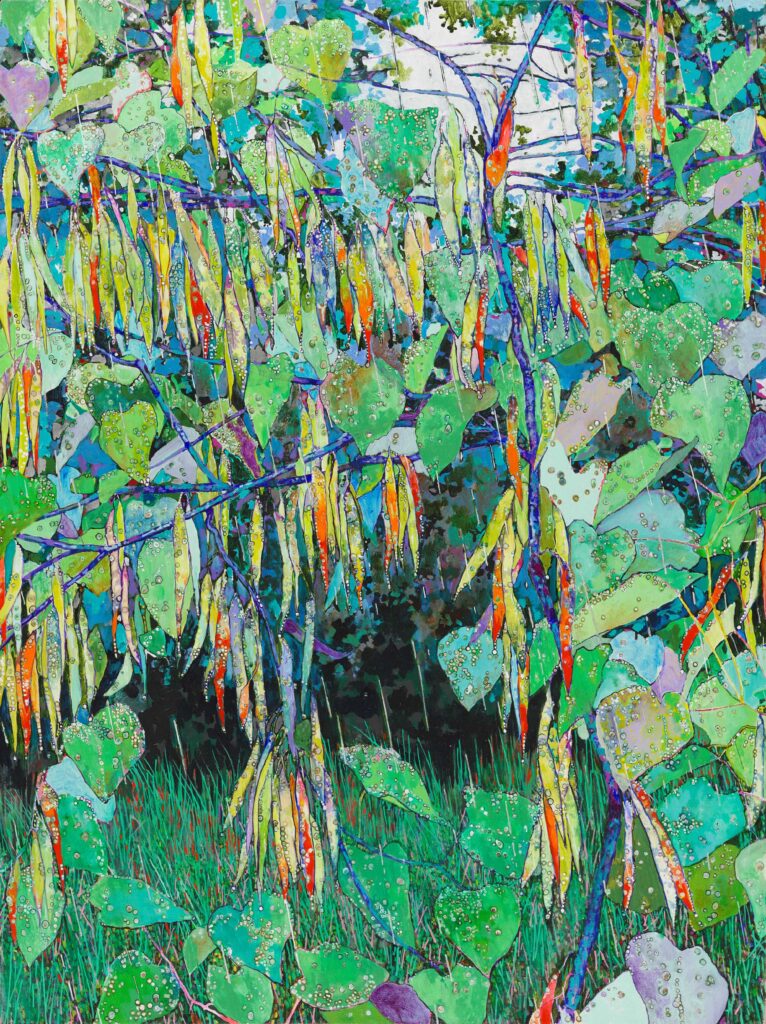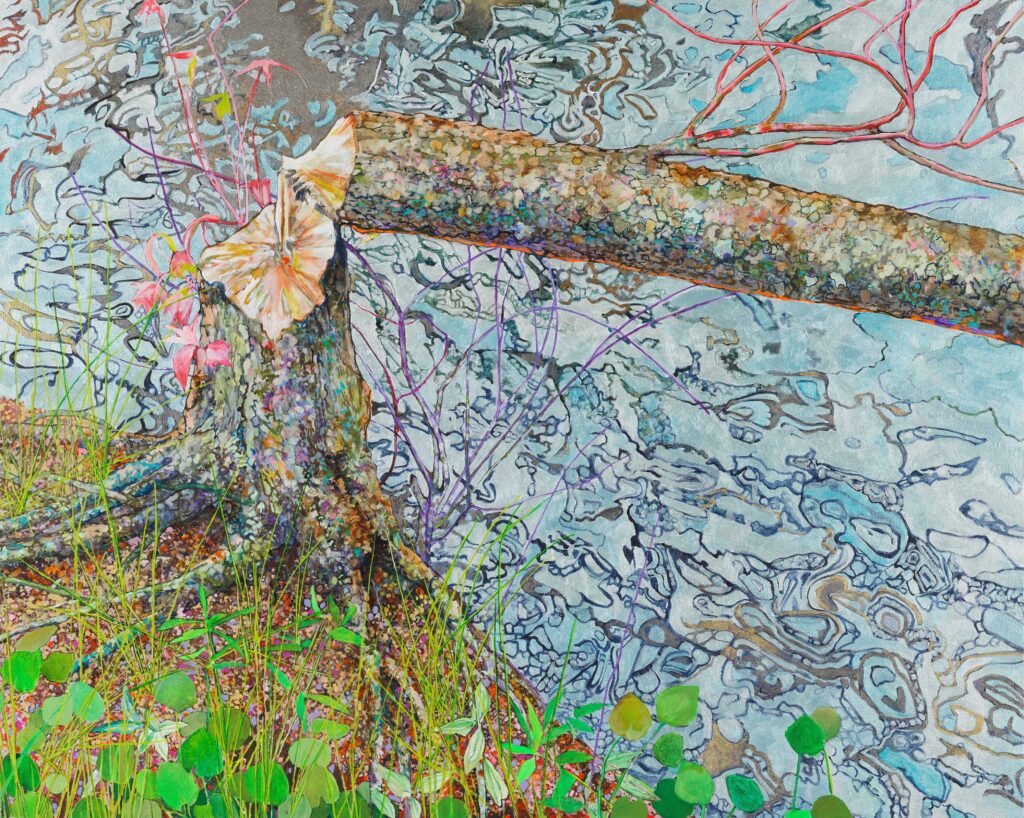



For months leading up to Elizabeth Bradford’s exhibition, I passed by one of her pieces in the gallery’s office and hanging storage. Every time, I was completely captivated and seduced by its vibrant, intertwining colors. Now that the show is up in the Van Every Gallery, I see how Bradford’s work transforms familiar botanicals—plants I’ve always found beautiful—into something even more striking through vivid hues and intricate details.
A few pieces have completely bewitched me, holding me captive and refusing to let me look away. As someone who loves the local flora, I was thrilled to see Pokeweed (Phytolacca americana) featured in Firewood, Poke, and Dying Poke. Pokeweed’s deep, jewel-toned purples are mesmerizing in nature, and Bradford translates them onto the canvas in an equally stunning way. Throughout the exhibition, the pokeweed appears in both its most animate state and in its process of decay. Seeing how she captures the plant’s majesty in life and in death—and renders it so ethereal—is truly inspiring.
Another painting that caught my eye is Rain, Redbud, which depicts an Eastern redbud tree (Cercis canadensis). As a fellow North Carolina native, I’ve always been fond of redbuds—their leaves remind me of tiny hearts. Bradford’s use of glitter-like materials in this piece mimics the way raindrops sparkle on leaves, bringing a touch of magic to an already enchanting subject.
Bradford’s paintings are also striking in scale. Their sheer size creates both a physical and mental confrontation, immersing me in the landscapes she sees. The large format demands that I engage with the intricate details, from the foreground to the richly textured backgrounds.
One piece I was especially ecstatic to see was What the Beaver Did. Lately, I’ve developed an infatuation with beavers and their incredible dam-building skills, so this piece spoke to me deeply. It highlights not just the beauty of flora and fauna, but also the dynamic interactions between them—something I find endlessly fascinating.
Bradford’s work reminds me to look closer, to appreciate not just the plants and animals around me, but the relationships between them. Her ability to elevate these natural elements into something both familiar and extraordinary is what makes this exhibition so mesmerizing.
To see the exhibition Elizabeth Bradfords: Warp Weft Water Weeds, visit the Van Every Gallery from February 13 to April 9!
– Izzy Hernandez ’25
